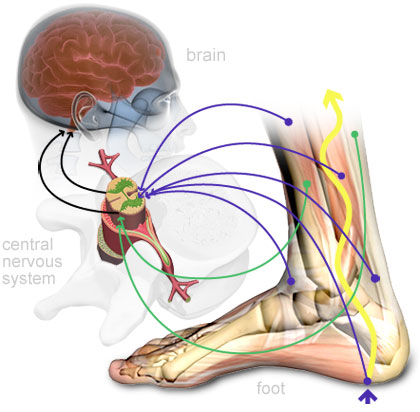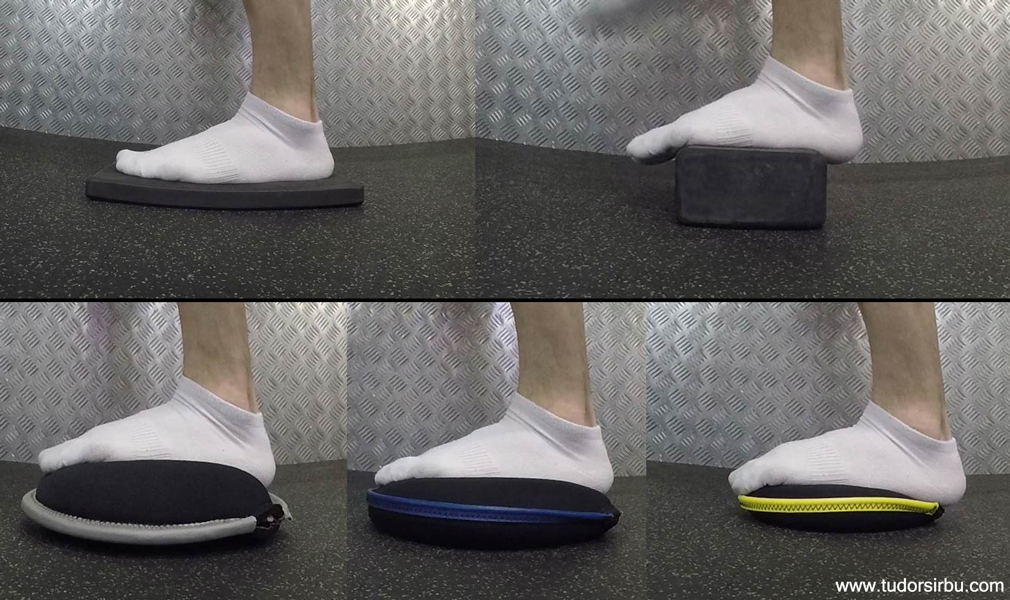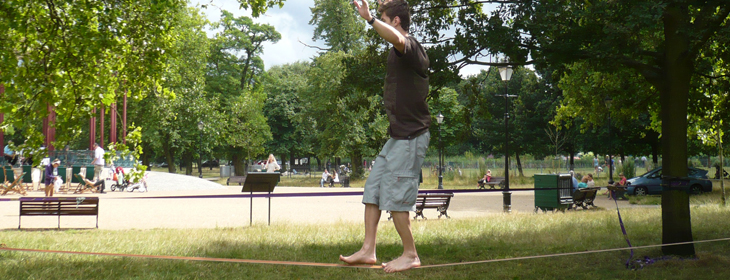
Everywhere I hear people talking about core stabilization and stability training for the core. In some cases a “core workout” includes exercises that are actually training the proprioceptors.
What is proprioception
Some books call it the sixth sense and basically it allows us to know where our entire body is, without having a look.
According to The American Psychological Association (APA) it is the unconscious perception of movement and spatial orientation arising from stimuli within the body itself.¹
But in order to stabilize the core your extremities should have sharp reflexes, right?
The sense of the body is given by three components: vision, balance organs(vestibular system located in the inner ear) and proprioception(joint angle, muscle length, and muscle tension).
More than one decade ago, Charles Scott Sherrington published a landmark work that introduced the terms “proprioception”, “interoception”, and “exteroception”. The “exteroceptors” are the organs that provide information originating outside the body, such as the eyes, ears, mouth, and skin. The interoceptors provide information about the internal organs, and the “proprioceptors” provide information about movement derived from muscular, tendon, and articular sources.
Proprioception is the body’s ability to transmit a sense of position, analyse that information and react (consciously or unconsciously) to the stimulation with the proper movement (Houglum 2001).²
With other words proprioceptors help you to touch your nose with your eyes closed(Field sobriety test is used by police officers to check for alcohol intoxication), scratch your head without looking in the mirror or walk up the stairs without having to look down with each step.
When we walk on the street, our brain uses the information sent by the receptors in our legs (especially in the feet) to create a map. This map is used to plan our movement in the space without calculating every step. When we focus our sight on something else and don’t notice the modification of the environment(like a curb) we continue to walk using that map and we hit it or it feels like we’re falling. This happens because the information is not updated and we didn’t expect that.
How do we move
In every moment our brain is invaded with loads of information that requires time for processing and in order to be efficient, our brains uses automatic movement patters (like locking the door when you leave home or turning the car engine on) to perform different tasks.
When we have to do a new movement, we analyse every aspect of it which make us to be slow in an non-efficient way because we can’t talk about the reflexes yet but reactions.
On a deep level our brains don’t like to think too much and prefer to act on patterns and practicing a movement over and over again it will become reflex.
Proprioceptors are like the eyes of the body, the way the body sees itself and if something happens with it, it’s like the body’s blind; for a better quality of life everyone should see clearly, so don’t lose the sight.
Sometimes when I’m teaching a better and more efficient version of a movement (like breaststroke in swimming) I had to make my adult clients to forget the wrong way(hands and feet are moving away from the body in the same time) to do the movement in order to facilitate the learning of the good way(a small delay between hands and feet movement. When working with kids this is not happening as they come with a blank canvas where I start painting the new skill without the need to wash it first like in some adult cases.
Training the proprioceptors
As mentioned previously, the sense of the body is given by the visual system, vestibular system and muscular system.
If one fails, the other could compensate or substitute to a degree and training by limiting one of them is beneficial for the rest.
One of the proprioceptors is the Golgi tendon organ(see picture) that provides information about changes in muscle tension with a series of sensors located in the tendons that attach muscle to bone.
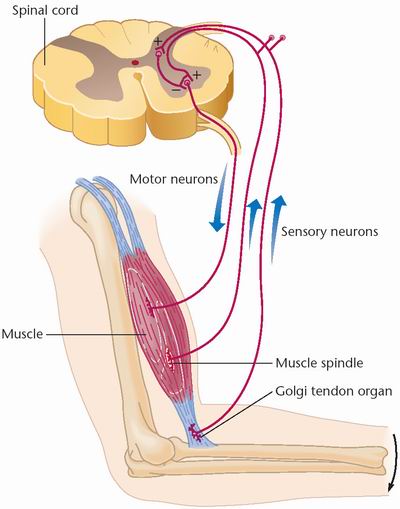
Image credit: 557.com.au
This organ is stimulated with resistance training and you can improve some movements skills just by performing it in a loaded version.
Like any other skill improving proprioception requires progression, just as improving strength or endurance.
I would never ask a client to lift a heavy weight on the first day of strength training or to run 5k in the weekend without being ready for it.
In order to prepare the body for this kind of exercises, we start working first on balance (standing on one leg for example), followed by coordination (touching the knee with the opposite hand/elbow), then agility drills (that include strength, speed, balance and coordination).
Image credit: Profeet.co.uk
Somehow many fitness professionals don’t consider the level where their clients are and prescribe exercises with a high demand on proprioception and risk to injure them.
Improving the proprioception will lead to better balancing skills necessary to maintain stability. More than that the agility and coordination will improve to and tasks like changing direction or other physical activities will be done consistently with accuracy and ease.
Also these exercises will help to reduce the risk of injury by teaching the body to react appropriately to unexpected changes in the environment.
Many fitness activities require a good sense of proprioception, especially some of the new core-training classes that are more and more popular.
One of the best proprioception exercises that can be done everywhere is to stand in one foot and reach the knee of the leg that’s in the air with the opposite limb (palm, forearm or elbow). If you can do it without losing balance, bent down and touch the toes of the ground leg with the opposite palm.
Knee and foot diagonal touch
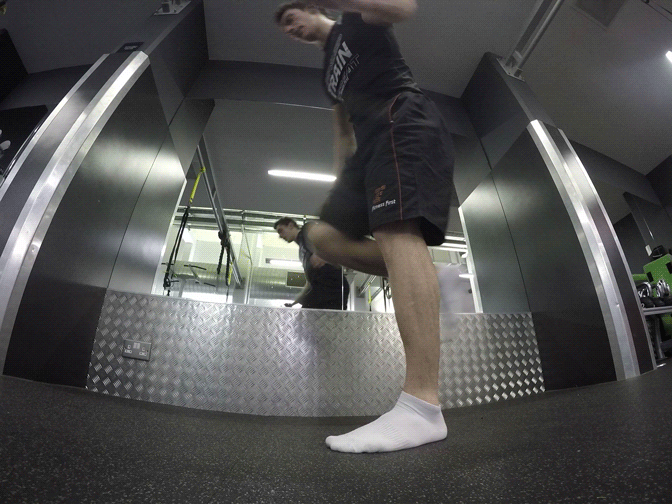
Steps: 1. Opposite arm to knee; 2. Fingers to toes.
If this version of the exercise is easy, perform it on different surfaces like a towel, Yoga blocks, Sandbells and SteelBells like in this picture:
Who should perform these exercises
Despite all the benefits of the proprioception exercises there are some instances when performing them you may actually cause more harm than good. If you suffer from acute inflammation or you recently had a surgery you should avoid some of the proprioceptive exercises until your doctor will give you green light.
Another reason why I’m not recommending these kind of exercises is joint instability. If the structures surrounding the affected joint need to be strengthen first, I recommend resistance training instead of proprioception exercises for that joint in particular.
For example – if the instability is located in the upper body(shoulder), performing proprioception exercises with the lower body(ankle) will cause no harm as long as the hands are used to make the exercise harder(holding a weight).
References
1. The American Heritage® Stedman’s Medical Dictionary, published by Houghton Mifflin Company.
2. Houglum, P.A. 2001. Therapeutic Exercise for Athletic Injuries. Champaign, IL: Human Kinetics.

